Genetic basis of color diversity in coral reefs discovered
Scientists have discovered the genetic basis which allows corals to produce their stunning range of colors. They have found that instead of using a single gene to control pigment production, corals use multiple copies of the same gene. Depending on how many genes are active, the corals will become more or […]
Social foraging, where animals forage in groups, takes many forms but is less studied in marine predators as measuring social associations in the wild is challenging. We used biologging (activity, cameras and telemetry receivers) sensors to measure social associations and simultaneous behaviour, in white sharks (Carcharodon carcharias) […]
Professor Brainerd and her research group combine anatomical studies of the musculoskeletal system with principles and techniques from engineering to understand the mechanical basis of movement in animals. Current projects include: biomechanics of the temporomandibular joint, muscle architecture, intercostal muscle function, and the development of a new 3D imaging technology, X-ray […]
Solar panels are usually made of thick solar cells, and are positioned at an angle to get the most amount of light from the sun as it moves throughout the day. Thin film solar cells, which can be only nanometers thick, have a lot of potential. These are cheaper and lighter, […]
Researchers from University of Plymouth and University of Exeter conducted a study where they tracked thermographic changes in captive juvenile pheasant flocks as they had spontaneous aggressive interactions during a short confinement time frame. The researchers used thermal cameras to observe the young pheasants and their temperature changes during aggressive interactions […]
Scientists are using lasers and a goggle-wearing parrot for the design of flying robots of the future.
A barely visible fog hangs in the air in a California laboratory, illuminated by a laser. And through it flies a parrot, outfitted with a pair of tiny, red-tinted goggles to protect its eyes.
[…]
Researchers studying Mantis shrimp discovered that the shrimp’s hammer-like appendage can release a strike with a force over 1000 times its body weight. The appendage uses a system of latches, springs, and levers to release the blow. In addition to the initial strike, researchers discovered that a second round of energy […]
Paper, The elastic secrets of the chameleon tongue
The ballistic projection of the chameleon tongue is an extreme example of quick energy release in the animal kingdom. It relies on a complicated physiological structure and an elaborate balance between tissue elasticity, collagen fibre anisotropy, active muscular contraction, stress release and geometry. A general biophysical model for the dynamics of […]
This internship is a summer R&D position for students who are interested in Bioinformatics, Molecular Biology, or Fermentation. The position is open to both sophomores and juniors. It’s a paid internship for 12 weeks, but interns must be able to relocate to Minneapolis, MN area and work in person.
Cancer is one of the leading causes of morbidity and mortality worldwide, and the discovery of new drugs for cancer therapy is one of the most important objectives for the pharmaceutical industry. Snake venoms are complex mixtures containing different peptides, proteins, enzymes, carbohydrates and other bioactive molecules, which are secreted by […]
Denali Therapeutics Biology Discovery Internship
Denali is seeking a motivated graduate student or postdoctoral fellow for an internship position in the Biology Discovery group to gain meaningful research experience in microglial biology. This is a hands-on laboratory position with abundant opportunity for collaboration with other researchers in a dynamic and fast-paced environment. The successful candidate will support high priority projects. […]
In a recent paper, researchers at the American Institute of Physics analyzed the swimming of zebrafish in a tank with particle image velocimetry and high-speed cameras. Their data showed that zebrafish are able to precisely control body fluctuations in order to generate “movable vortex pairs of high- and low-pressure regions” which […]
Wyss Insititute Harvard, Bostom, MA
As Pac-man-shaped Xenobot “parents” move around their environment, they collect loose stem cells in their “mouths” that, over time, aggregate to create “offspring” Xenobots that develop to look just like their creators.
Learn more (opens external site)
News, underground communication networking of trees
“Wise old mother trees feed their saplings with liquid sugar and warn the neighbors when danger approaches. Reckless youngsters take foolhardy risks with leaf-shedding, light-chasing and excessive drinking, and usually pay with their lives. Crown princes wait for the old monarchs to fall, […]
FNs were first described as potent antiviral agents 40 years ago, and recombinant IFN-α2a and IFN-α2b were approved for the treatment of hairy cell leukemia just 11 years ago. Today, α-IFNs are approved worldwide for the treatment of a variety of malignancies and virologic diseases. Although the exact mechanism of action of IFN-α in the […]
News, living robots can now reproduce
Xenobots are “biological robots made from frog cells that can replicate by smooshing loose cells into new robots—a reproduction method not seen in any other organism.” These xenobots can move and heal themselves, and when brought together, can combine to construct new xenobots, which is what really […]
Gavin Kenneally, grew up inspired by Professor Full, who assisted him further during his undergraduate studies and connected him with his PhD advisor. After PhD, he co-founded Ghost Robotics where his team created robot dogs to patrol the U.S. border.
He describes: “What differentiates our technology is […]
Memory is traditionally associated with complex organisms that have a nervous system. However, simple organisms can store information about previous experiences, such as nutrient sources, for survival purposes. Organisms like the unicellular slime mold Physarum polycephalum utilizes its network of interlaced tubes in varying diameters that shrink and grow in response […]
Harman, who was already building crude canoes for his fishing expeditions, began experimenting with curves and spiral shapes. He sketched his vision for a boat “as nature would have designed it,” and took it to a boat-building expert who told him that it […]
As part of the Design Field Notes series, Berkeley architecture associate professor M. Paz Gutierrez joined Jacobs Hall for its annual Fall Talks. In her talk, she shared her genre-bending projects, which often draw from nature for inspiration and materials. Explaining that she […]
Bio-Inspired Robotics Design Conference, New York
International Conference on Bio-Inspired Robotics Design is a conference taking place in New York on April 25-26, 2022. The conference was postponed from 2020 due to the coronavirus. The website states that they are looking for contributors to the conference, under the “Call for papers” tab. They also mention guidelines for […]
Recognition of natural objects in the archerfish
This article suggests that there is an existence of a complex visual process in the archerfish visual system that enables object recognition and categorization.
Learn more (opens external site)
Snake’s have infrared vision. Scientists in this paper research and examine snakes to determine if infrared receptors in snakes are via thermal or photochemical mechanisms
Learn more (opens external site)
Paper, ‘Math neurons’ identified in the brain
The brain has neurons that fire specifically during certain mathematical operations. The findings indicate that some of the neurons detected are active exclusively during additions, while others are active during subtractions. They respond in the same manner whether the calculation instruction is written down as a word or a symbol.
Researchers found a bull ant venom component that exploits a pain pathway in mammals, which they believe evolved to stop echidnas attacking the ant’s nests.
Abstract:
Australian bull ants have evolved a venom molecule perfectly tuned to target one of their predators — the echidna — that also could have […]
News, Insect Inspired Tiny Agile Drones
Robotic researchers at MIT solved a design problem in building tiny drones by replacing typical hard wings with soft insect-inspired wings that beats at a very high frequency. These changes enabled the centimeter-scale drones that demonstrated unprecedented resilience and agility in flight.
Learn more (opens external site)
When we think of robots, we immediately envision them being made out of hard and durable metal. However, soft materials within animals have inspired a new wave of “soft robots”. This paper discusses the recent development in “Soft Robotics” and explains the mechanisms […]
Mechanics behind the shell of crush-resistant beetles
Previously it was thought that the steel plates of crush-resistant beetles and the material that composed the exoskeleton itself lended itself to the great strength of the shell. However, it was recently discovered that it is the connections between the exoskeleton and elytra (a specific exoskeleton substructure) which create an air-filled […]
This beautiful shrub is native to Europe, North Africa, and West Asia. It is one of the best-known poisonous plants from ancient Egypt to the Middle Ages up until now. It is the ancient Egyptians they were responsible for promoting its use as a powerful narcotic.
The toxins responsible for its […]
The amazing adhesive property of the gecko toe has been researched, analysed and documented to a significant degree, but there has been little research on how a gecko is able to coordinate its many ‘sticky’ toes in agile motion. A recent research conducted in May 2020 explores the control function of […]
In response to the growing demand for indoor environmental quality (IEQ) and energy efficiency, abundant innovative bio-inspired cooling technologies have been proposed and their applications in buildings have been greatly demonstrated in the previous decades to enhance the benefits of building occupants. IEQ is associated with human […]
ORNILUX® BIRD PROTECTION GLASS
Orb weaver spiders, common worldwide, build their distinctive webs using strands of silk with UV reflective properties. Because birds can see ultraviolet light, the reflective threads prevent them from colliding with and destroying the webs. Inspired by the spider’s strategy, ORNILUX® Bird Protection Glass has a patterned, […]
The miniature robber fly Holcocephala fusca intercepts its targets with behaviour that is approximated by the proportional navigation guidance law. During predatory trials, we challenged the interception of H. fusca performance by placing a large object in its potential flight path. In response, H. fusca deviated from the path predicted by […]
Podcast, Forests on Forests
Second part of a story about the forest’s interconnectedness through its roots. In fact, this story is about canopy soil, a relatively new discovery that soil exists on the top of trees that helps to facilitate all sorts of life. The major discovery in this piece, however, was the fact that there were trees of […]
News, Hawks’ pursuit of prey has implications for capturing rogue drones
Researchers at the University of Oxford have found that Harris Hawks, when pursuing an erratically maneuvering dummy bunny, can utilize a mixed guidance law to more effectively pursue it. Their turn rate is determined by feeding back information on the angle between their target and current flight direction, along with how […]
This article is about research on the ladybird beetle’s adhesive ability in the air and underwater. It was considered that the air bubbles underneath the pads of the legs would help them walk on high slope surface, but the team is testing out if that is actually the case.
Learn more (opens external site)
News, Unbreakable glass inspired by seashells
Scientists develop stronger and tougher glass, inspired by the inner layer of mollusk shells. Instead of shattering upon impact, the new material has the resiliency of plastic and could be used to improve cell phone screens in the future, among other applications.
Learn more (opens external site)
A new study has found the tiny structures made up of mushroom-shaped micropillars topped with ultra-small pores allow lizards to quickly detach their tails when needed.
Microscopy images showed that each lizard tail muscle break-off point consists of highly dense mushroom-shaped micropillars with ultra-small nanopores dotting […]
Lotus effect: Self-cleaning bioplastics repel liquid and dirt
Researchers have developed a self-cleaning bioplastic that is sturdy, sustainable and compostable. The innovative plastic developed at RMIT University in Melbourne, Australia, repels liquids and dirt, almost replicating/taking inspiration from the lotus leaf, then breaks down rapidly once in soil. It is simple to make and could easily be integrated with […]
Biomimetic Millisystems Lab: University of California, Berkeley
The Biomimetic Millisystems Lab performs research to improve millirobot capabilities and harness bioinspired principles, as well as aspects of animal manipulation and locomotion of the animals the robots emulate. An example of a recent research project at the Lab is the “OpenRoACH: A Durable Open-Source Hexapedal Platform […]
Learn about our two Decals!
 Click here to find out more about our Fall Bioinspired Design Decal and our Spring Bioinspired Design in Action Decal – ALL MAJORS are welcome.
Click here to find out more about our Fall Bioinspired Design Decal and our Spring Bioinspired Design in Action Decal – ALL MAJORS are welcome.Berkeley BioDesign Community
 Click here to learn about the BioD: Bio-Inspired Design @ Berkeley student organization or here to signup for more info.
Click here to learn about the BioD: Bio-Inspired Design @ Berkeley student organization or here to signup for more info.Search
Student Login


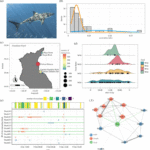
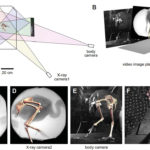
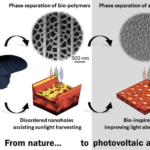
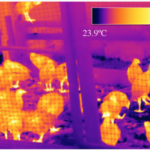
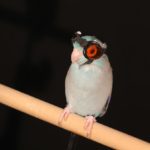
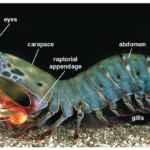
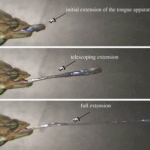


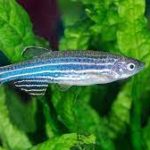





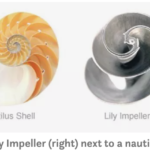


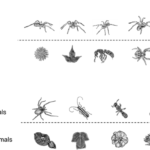
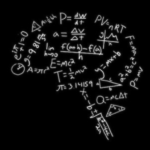
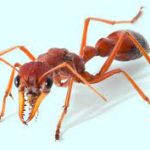
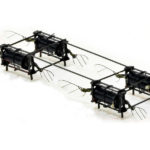
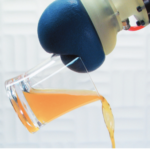



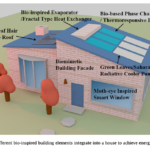

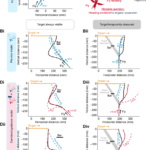

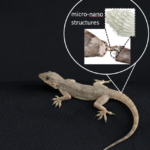

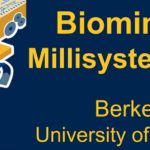


I imagine that the neurological circuits underlying these processes are governed by both 2d spacing maps with their brains as…
to reduce the impact of car accidents, it may be possible to study the force diverting physics of cockroaches to…
you see this type of head-bobbing stability in many avian creatures related to pigeons like chickens. the head ability to…
not like they taught horses how to run! this is an example of convergent evolution where both sea creatures and…
The brain functions in a similar way with neuronal connections. our brains are able to utilize the multiplicity of connections…